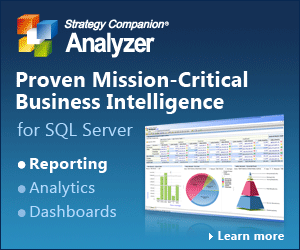Making the Leap from the Desktop to Enterprise IT
- Friday, April 10, 2009, 20:01
- Uncategorized
- Add a comment
 Regulation such as Solvency II, principle-based approaches and volatility in the markets are driving the need for more complex actuarial/financial models and greater computing power. According to Brian Heale, Product Director at Towers Perrin, insurers would benefit by migrating from their desktop systems to an enterprise IT environment with the computing power, security, audit capability and controls necessary for corporate governance and compliance.
Regulation such as Solvency II, principle-based approaches and volatility in the markets are driving the need for more complex actuarial/financial models and greater computing power. According to Brian Heale, Product Director at Towers Perrin, insurers would benefit by migrating from their desktop systems to an enterprise IT environment with the computing power, security, audit capability and controls necessary for corporate governance and compliance.
One outcome of the recent financial crisis is that senior managers know that they need to improve their firm’s risk governance processes. To do this, these decision makers need better information from sophisticated financial models. To get this information quickly and reliably, they’ll need a scalable, reliable risk technology platform – Microsoft HPC can help (see exhibit).
WFS: What are the drivers for IT changes in the insurance industry?
BH: Historically, it was sufficient to calculate solvency perhaps once a year. But new regulations, the credit crunch and market volatility have driven insurers to change their approach. Now, actuaries need to run financial models much more frequently so that senior managers understand the capital and solvency position in a timely manner, both at business unit level and at the overall group level. This information is also critical to regulators, external stakeholders and rating agencies.
WFS: How are actuaries affected, and
how does HPC help them?
BH: Actuaries need to be responsive to the needs of the business. Their output must be available to the entire enterprise so managers can make better-informed decisions. However, it takes too long to run complex models on the desktop systems actuaries currently use.
HPC provides an upgrade in computing power and brings actuarial systems into the realm of an insurer’s mainstream enterprise IT architecture.
WFS: What challenges does this present?
BH: Actuarial departments traditionally have been self-contained units, but now actuaries and IT professionals are engaging to develop the technology capabilities required by the organization and regulators. Insurers’ finance and risk departments are important users of actuarial information. Consequently, the role of the actuary is growing, and this presents a range of cultural and political challenges.
WFS: How are you helping insurers get the best out of HPC?
BH: Most of our customers currently use Towers Perrin’s MoSes and TAS financial modeling software, which are desktop solutions. Initially we developed versions of these solutions that use HPC so they have the power and robustness to run models much faster and more frequently.
We see this as the first step toward having a wider enterprise modeling capability. To meet these more sophisticated requirements, we developed RiskAgility™, which is an enterprise financial modeling platform. Customers can effectively plug their MoSes applications into the RiskAgility platform, and it will provide highly scalable computing power in a secure, controlled, audit-capable modeling environment.
WFS: Can you give an example of an insurer you’ve worked with recently and how they benefited?
BH: Two leading insurers, one in the U.K. and the other in Japan, are deploying the new MoSes HPC solution across their organizations. They’ve recognized that the scalability and stability of this solution would help them get better information faster and more reliably.
WFS: How do you see insurers maximizing HPC technology?
BH: The requirement for on-demand information to satisfy regulators, rating agencies and the needs of the business are driving insurers to move to more powerful distributed processing solutions. Most of our medium and large insurance clients are planning to utilize HPC technology for their financial risk modeling. The capability that HPC provides allows actuaries to be more creative in their modeling methodologies. In the future, they will demand even greater computing power, and that’s why distributed processing technology such as HPC is an important component of RiskAgility.
www.towersperrin.com
- Share
-
 Print This Post
Print This Post






